Popular in your industry

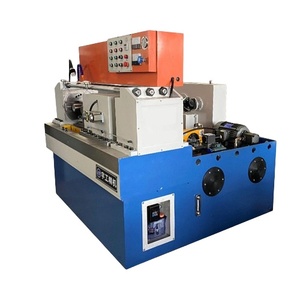
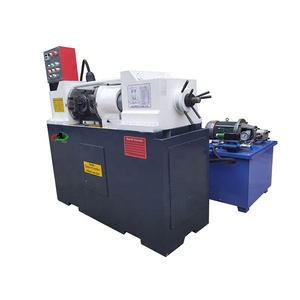
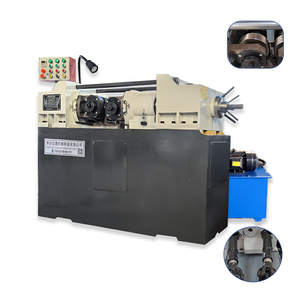



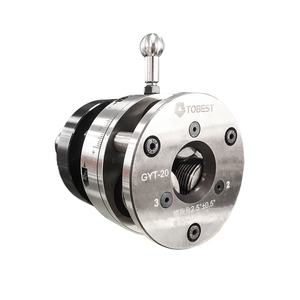
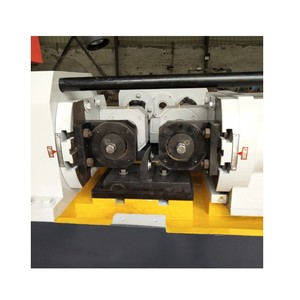
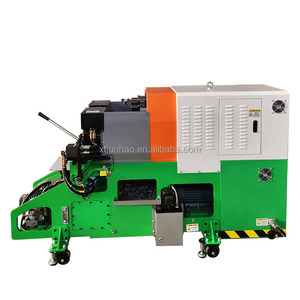

Related Searches:


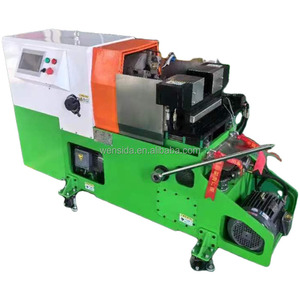


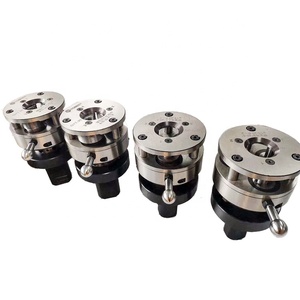





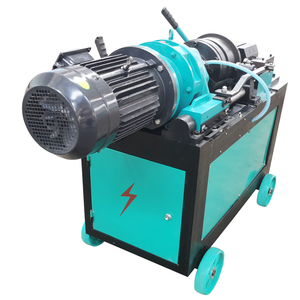
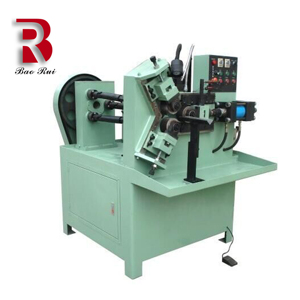
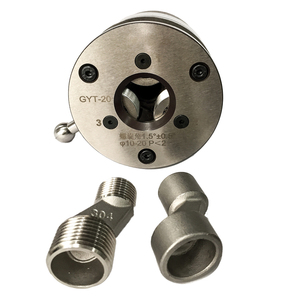


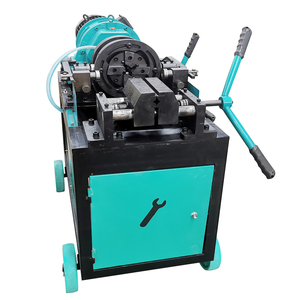



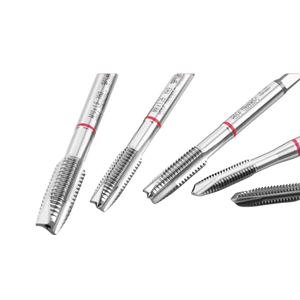


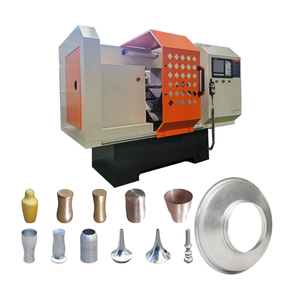
Top categories
About lathe thread rolling machine
Types of Lathe Thread Rolling Machines
There are four main types of machines that can perform the function of a lathe thread rolling machine:
- Cylindrical Die Rolling Machines:
The cylindrical thread rolling machine uses two dies to create a thread on the workpiece. One die is stationary, while the other is movable. The workpiece is placed between the two dies, and pressure is applied to the movable die, which causes the thread to deform into the workpiece. Cylindrical die rolling machines are versatile in their ability to create threads on various workpiece shapes, including cylindrical, conical, and spherical parts.
- Flat Die Rolling Machines:
Flat die thread rolling machines use two flat dies to form the thread on the workpiece. As with the cylindrical die machine, one die is stationary, while the other applies pressure to deform the thread into the workpiece. Flat die rolling machines are well-suited for creating external threads on cylindrical workpieces. They are also used for rolling threads on screws, bolts, and other fasteners.
- Planetary Die Rolling Machines:
Planetary thread rolling machines have multiple dies arranged in a circular pattern around the workpiece. As the workpiece rotates, the dies are pushed inward to create the thread. Planetary threading machines are suitable for high-volume production of threaded parts. The machines are known for their high speed and efficiency. They can simultaneously form multiple threads on a workpiece.
- Axial Rolling Machines:
The axial thread rolling machine is also known as the radial thread rolling machine. This machine forms threads by moving the workpiece axially against a stationary die. It functions similarly to a lathe machine, but instead of cutting the thread, it deforms the material to form the thread. Axial rolling machines are commonly used to produce external and internal threads on workpieces. They are ideal for creating threads on cylindrical parts like shafts, rods, and pipes.
Specifications and Maintenance
- Specifications
The specifications of the lathe thread rolling machine vary depending on the model and type, such as external or internal thread rollers. Here are the specifications of the machine under different aspects.
Rolling speed and force: The process of rolling threads on a workpiece involves the application of force and movement. The rolling speed and the force with which the rollers are pushed into the workpiece are vital to the quality of the thread produced. The force and speed can be adjusted in the machine. The rolling force is measured in tons, and the speed is measured in revolutions per minute (RPM). The rolling force capacity of the machine can range from several tons to tens of tons, depending on the model. The rolling speed of the machine can also vary, typically ranging from 30 to 100 RPM.
Thread size capacity: The sizes of threads that can be rolled with the machine are based on the diameter and pitch of the threads. The machine can be used to create threads with various dimensions, ranging from micro-sized threads to larger threads. The maximum diameter of the workpiece that can be accommodated by the machine determines the maximum size of the threads that can be rolled. The thread size capacity of the machine is usually expressed in terms of the maximum diameter and pitch it can handle.
Power rating: The power rating of the machine's motor determines the strength of the machine. The power of the motor is the force behind the rollers. The power rating of the machine can vary depending on the model. It is usually measured in watts or horsepower. The rating can range from several hundred to several thousand watts. Higher power ratings indicate greater motor strength and the ability to handle larger workpieces and higher rolling forces.
Precision and repeatability: The precision and repeatability of the machine is important when trying to achieve consistent thread quality. The precision refers to the tight tolerances and accuracy of the machine's components, while repeatability describes its ability to consistently produce the same results. The precision and repeatability of the machine are achieved through features like precise controls, rigid construction, and high-quality components. The machine can help in making threads with high accuracy and repeatability.
Durability and build quality: The machine is usually made of high-quality materials. The machine is designed to withstand heavy-duty use and provide long-lasting performance. The heavy-duty construction of the machine ensures that it can withstand the forces and stresses of the thread rolling process. The durability and build quality of the machine make it suitable for use in demanding industrial applications.
- Maintenance
Proper maintenance is essential for the optimal performance and longevity of the lathe thread rolling machine. Here are some maintenance tips.
Cleaning: Regularly clean the machine to remove chips, debris, and oil buildup. This prevents contamination and friction, which can lead to damage.
Lubrication: Apply lubricant to the moving parts and surfaces to ensure smooth operation and reduce wear. Lubrication is important in preventing overheating and premature wear of components.
Inspection: Periodically inspect the machine for signs of damage, wear, or loose components. Check the rollers, guides, and drive systems to ensure they are properly aligned and functioning. Look at the electrical connections and controls for any loose parts.
Adjustments: Follow the manufacturer's instructions to make the necessary adjustments to the thread rolling machine. This may include adjusting the pressure and speed of the rolling process and making changes to the machine's settings.
Safety: When performing maintenance tasks, it is important to follow all safety precautions. Disconnect the power and wait for the machine to cool down before performing maintenance. Wear proper protective equipment to prevent accidents.
Training: Ensure that people who are responsible for maintenance have the proper training and skills. Training helps them understand the machine's structure and key components. This will enable them to properly maintain the machine and identify potential issues.
Scenarios of lathe thread rolling machines
The thread rolling machine lathe can be used in various industries and applications. Here are some popular usage scenarios of the machine:
- Automotive Industry:
In the automotive industry, a thread rolling machine is used for making various automotive components. For instance, it can be used to make engine parts, transmission parts, wheel studs, and fasteners. The machine can produce precise and strong threads on these automotive parts. The parts made using a thread rolling machine are not only durable but also resistant to loosening, which can improve the safety of vehicles.
- Construction Industry:
In the construction industry, the machine can be used to make various building and construction components with threaded features. For instance, the machine can be used to make threaded rods, anchor bolts, and rebar. The threaded rods are used for connecting steel structures, while anchor bolts are used for anchoring concrete and masonry structures. The machine helps to produce high-quality threaded parts that can withstand heavy loads and provide secure connections in construction projects.
- Electronics Industry:
In the electronics industry, the machine can be used to make electronic components with threaded features. For instance, it can be used to make screws, connectors, and fasteners. The machine helps to produce small-sized threaded components that can be used in electronic devices. The machines can be used to produce high volumes of threaded electronic components with consistent quality.
- Metalworking Industry:
In the metalworking industry, the thread rolling machine can be used to make different metal parts. For instance, it can be used to make shafts, studs, and screws. The machine can be used to make precise threads on metal parts. These metal parts can be used in various industries, such as automotive, aerospace, and machinery industries. The machine helps to produce metal parts with strong threads that have improved fatigue resistance.
- Aerospace Industry:
In the aerospace industry, the thread rolling machine can be used to make aerospace components with threaded features. Aerospace components, such as bolts, pins, and fasteners, require precise threads to meet the high safety and reliability standards of the industry. The machine helps to produce aerospace components with high-strength threads that can withstand extreme conditions.
How to choose lathe thread rolling machines
When choosing machines for customers, sellers must consider the machines' capabilities and features to ensure they meet users' needs.
- Understand customer requirements
Dealers must consider the user's application when choosing a machine. This will help them determine the type and size of the device required. Dealers should know the type of material the customer will use with the machine. They should also determine the diameter, length, and pitch of the required workpiece. Knowing these details will help them choose a machine with the appropriate capacity. Dealers should also consider the required output. This will help them choose a machine that can meet the customer's production needs.
- Research machine types and features
Dealers should familiarize themselves with the types of machines that exist. They should know the features of each type and how they can vary. When choosing a device for a customer, dealers should consider the machine's performance. They should look at things like the maximum diameter of the workpiece the machine can handle. They should also consider the power of the machine. Dealers should also look at the machine's feeding speed. They should also consider the number of workpieces the device can process at a time. Dealers should also know the machine's threading range. This includes the threading diameter and pitch that the machine can handle.
- Check the machine's quality
Dealers should ensure that they are purchasing a machine of good quality. They should make sure the machine is well-built and made of durable materials that will last for many years. Dealers should also ensure that the device is easy to operate and maintain. They should also make sure the device has safety features to protect the operator during use.
- Consider the customer's budget
Dealers should consider the customer's budget when choosing a machine. They should look for options that offer the best performance at the customer's price point. Dealers should also look for machines that offer great value for money. Customers should get a high-performance machine for a reasonable price. However, they should not sacrifice quality for a low price. Dealers can also negotiate with suppliers for a better price on the machine.
Q & A
Q1 What is the difference between a lathe machine and a thread rolling machine?
A1 A lathe machine cuts the external thread of the rod or job, while the internal and external threads are rolled in a thread rolling machine without cutting the material.
Q2 What are the common materials suitable for a thread rolling machine?
A2 The common materials that are suitable for thread rolling machines are aluminum, alloy steel, brass, carbon steel, and stainless steel.
Q3 What are the benefits of using a thread rolling machine?
A3 The benefits of using a thread rolling machine are improved strength, extended product life, increased productivity, and cost savings.
Q4 How does a thread rolling machine work?
A4 The rollers on the machine press into the blank material with high pressure, deforming it into the shape of the thread profile. This process does not remove any material from the blank, as is the case with machining.



























